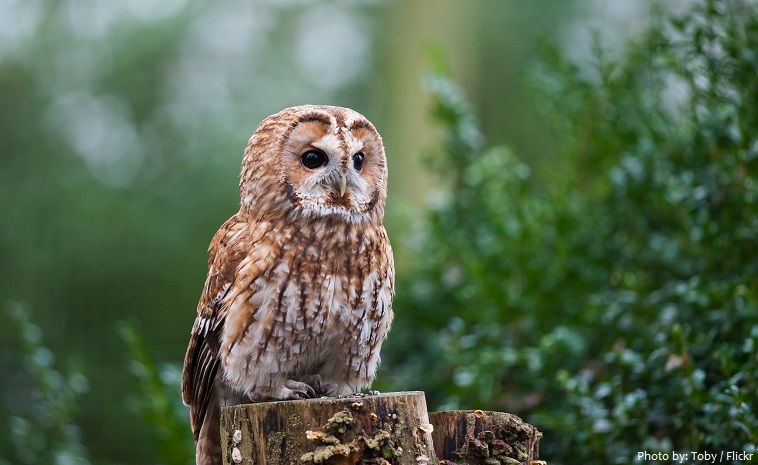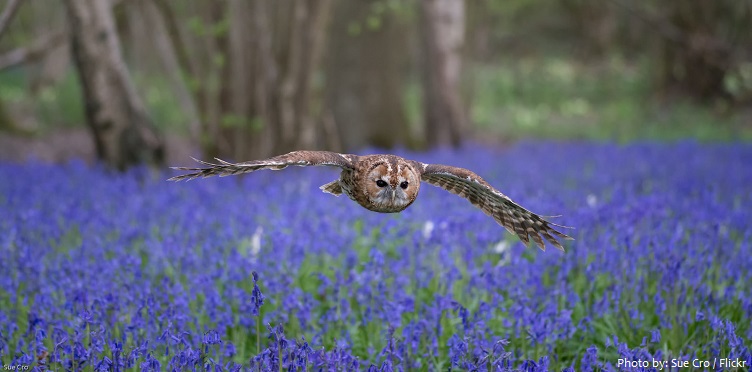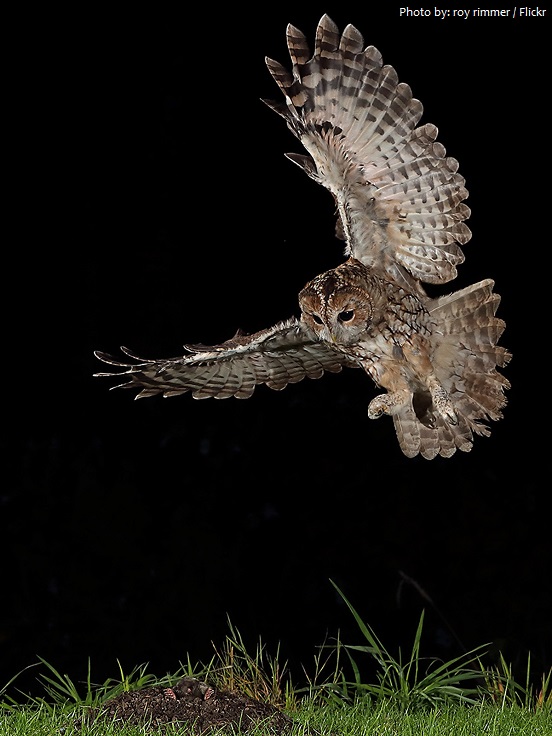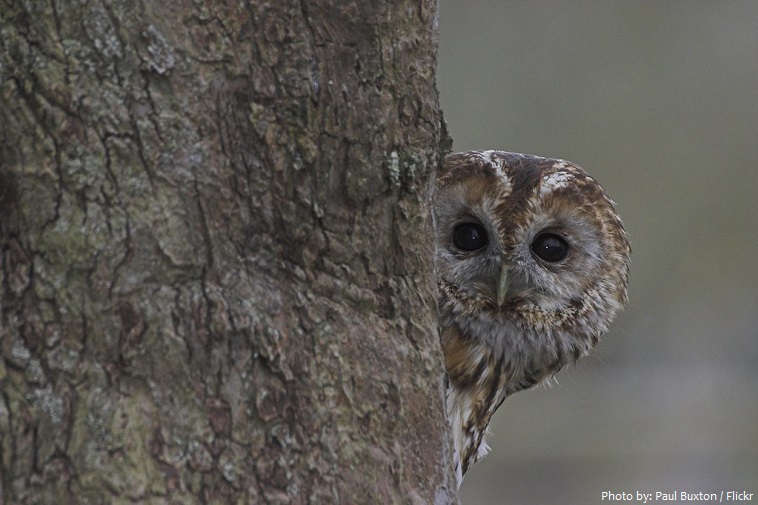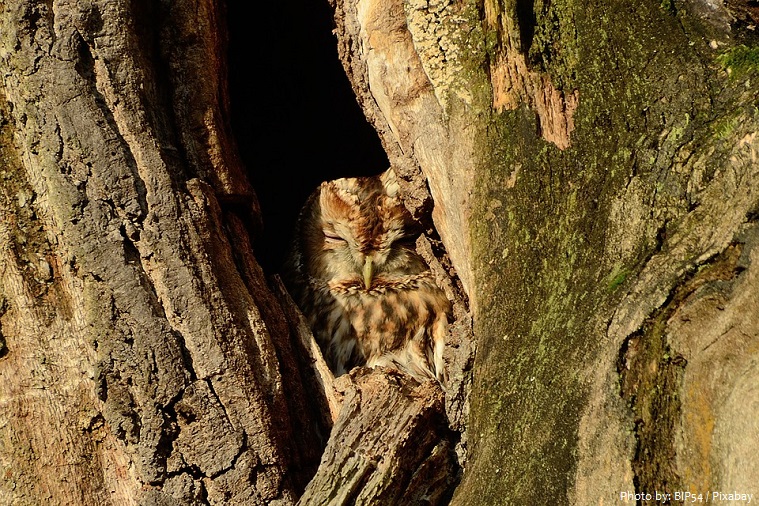Tawny owls or brown owls are a species of owl with the scientific name Strix aluco.
They are found discontinuously across temperate Eurasia from Great Britain and the Iberian Peninsula eastwards to western Siberia.
Tawny owls live in open, deciduous, or mixed forest or woodland, agricultural areas with trees, parks, and large gardens, preferring locations with access to water.
The typical lifespan of the tawny owl in the wild is 4 years. The oldest wild tawny owl ever recorded lived 21 years and 5 months. Captive birds can live over 27 years.
The tawny owl a stocky, medium-sized owl; from 37 to 46 cm (15 to 18 in) in length, with an 81 to 105 cm (32–41 in) wingspan. Weight can range from 385 to 800 g (0.85 to 1.76 lb).
These owls exhibit geographic variation in color. They can be either: a deep chestnut-brown or a gray palette.
Tawny owls have large, rounded heads with no ear tufts. The facial discs are usually plain, with pale whitish crown-stripes or extra “eyebrows” that add to the owl’s kindly expression.
Hearing is important for a nocturnal bird of prey, and as with other owls, the tawny owl’s two ear openings differ in structure and are asymmetrically placed to improve directional hearing.
Owl eyes are quite large compared to the rest of its head. A humans eye weighs less than 1 percent of the head’s weight; owls, comparatively, have eyes so large that there is almost no room for eye muscles. Therefore, they can turn their heads almost 270 degrees instead of moving their eyes.
Tawny owls are stocky birds with rounded wings designed for gliding and use of fewer wing beats.
They are generally nocturnal, though occasionally they are spotted in the daylight.
Tawny owls very agile birds, able to maneuver around trees and obstacles in almost complete silence.
The tawny owl hunts almost entirely at night, watching from a perch before dropping or gliding silently down to its victim, but very occasionally it will hunt in daylight when it has young to feed. This species takes a wide range of prey, mainly woodland rodents, but also other mammals up to the size of a young rabbit, and birds, earthworms and beetles.
This owl is non-migratory and highly territorial.
Tawny owls are highly vocal, giving a variety of calls, the most distinctive of which is the ‘to-woo’ hoot used to announce ownership of their territory.
They have individually distinctive hoots and, with the aid of a computer, hoots of different birds can be distinguished, using the length of different call components with an accuracy of 99%.
Tawny owls pair off from the age of one year, and stay together in a usually monogamous relationship for life.
The tawny owl typically nests in a hole in a tree, but will also use old European magpie nests, squirrel drey or holes in buildings, and readily takes to nest boxes. The typical clutch of two or three glossy white eggs is incubated by the female alone for 30 days to hatching, and the altricial, downy chicks fledge in a further 35–39 days. The young usually leave the nest up to ten days before fledging, and hide on nearby branches. The parents care for young birds for two or three months after they fledge.
This species is fearless in defense of its nest and young, and, like other Strix owls, strikes for the intruder’s head with its sharp talons.
Because its flight is silent, it may not be detected until it is too late to avoid the danger. Dogs, cats and humans may be assaulted, sometimes without provocation.
Predators of the tawny owl include large birds such as Ural owls, eagle owls, northern goshawks, golden eagles, and common buzzards.
There are 11 known subspecies of tawny owls.
Owls can see up to 10 times better than humans in low-light conditions

